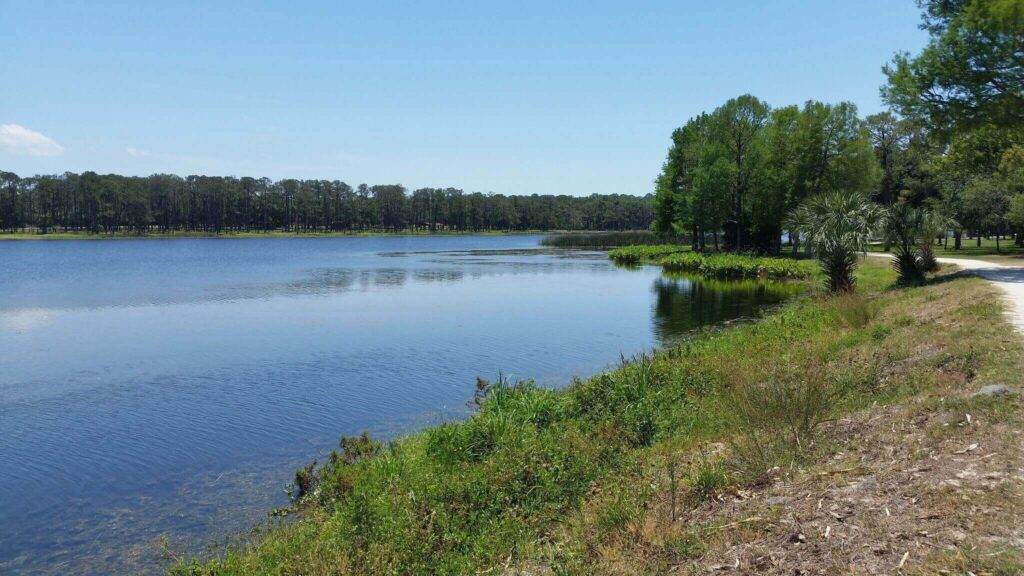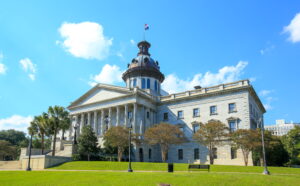November 1, 2022
—
Tampa Bay is the second-most flooded region in all of Florida. Though Tampa communities largely avoided major flooding from Hurricane Ian last month, they have carried out all sorts of adaptation measures to prepare for tropical storms and rising seas.
And one city has had particular success in the last several years.
Less than a decade ago, Largo, a coastal city of nearly 84,000 and an American Flood Coalition member, saw dozens of sewer and stormwater overflows every year. Since then, the city has virtually eliminated stormwater flooding within its boundaries — even as storms have become stronger.
“We’ve spent millions of dollars on both capacity as well as really targeting rainwater infiltration into our sanitary sewer system,” said Woody Brown, mayor of Largo and AFC member. “And it’s been really successful. We haven’t had [a sewer or stormwater overflow] in four years.”
Largo is across the bay from Tampa and just north of St. Petersburg, squeezed between the Gulf of Mexico and Old Tampa Bay. When tropical storms surge through the Gulf, Largo can see several inches of rainfall in under an hour. The city’s low-lying geography also makes it particularly vulnerable to king tides, with saltwater overflowing into streets and properties.
Despite these risks, Largo has shown that with the right amount of planning, flooding can be curtailed. According to Brown, the city has consistently prioritized stormwater projects, increasing the size of pipes in some cases, and increasing the capacity of stormwater ditches in others. The city also recently lifted five of its sanitary sewer treatment stations, so that they could continue functioning even during a major storm.
But not all solutions are straight engineering fixes. The city also invests in natural flood resilience structures, like parks and mangroves. On top of draining water back to the bay, this type of flood infrastructure promotes economic development: Rather than an onsite stormwater treatment plant, there’s a centrally located park that the city and investors can build around.
In addition to such projects, Largo is also carrying out a vulnerability assessment to determine just how much of the city is at risk of flooding.
“Things like stormwater infrastructure, critical assets, and cultural and historical areas that are important to the community are going to be incorporated into [the vulnerability analysis],” said Laura Thomas, sustainability manager with the city of Largo. “We’ll have a really granular level understanding of what will be impacted by these things so that we can enhance our planning moving forward.”
Largo works with other municipalities in the area on many of these projects. The city is active in the Tampa Bay Regional Planning Council, which brings together six counties to discuss water infrastructure, hurricane preparedness, and other flood challenges.
Additionally, Pinellas County is made up of 24 cities, and Largo shares a border with four of them. Since flooding often spans jurisdictional boundaries, it’s essential for cities like Largo to work with other municipalities and government entities on flood projects.
Such regional collaboration was one of the focuses of the American Flood Coalition’s Mayors Summit on Flooding and Sea Level Rise, which Mayor Brown attended this summer.
“It is important for our community and for people that own businesses in Largo that we are proactive in identifying solutions to flooding in a collaborative manner,” Brown said. “The American Flood Coalition helps us connect with resources, such as federal funding opportunities, and provides support to access those resources and pursue resiliency-focused solutions.”
In Largo, as well as in many flood-affected communities around the county, local leaders are driving forward-looking solutions. By identifying and communicating the risks and working with nearby municipalities, cities like Largo are preparing for the future and protecting residents from the impacts of flooding and sea level rise.
—
This post was authored by Brandon Pytel, Communications Associate, American Flood Coalition.
Credit for featured image at top: Michael Curi/Flickr.






